This article was co-authored by Murisa Harba. Murisa Harba is an Acting Coach, Dance Instructor, and the Artistic Director & Owner of About the Works Actors Studio and Take My Lead LA. With over 13 years of experience, she specializes in private ballroom dancing lessons and encouraging actors to creatively tell stories. Murisa holds a BFA in Theatre and a Minor in Dance from Boston University’s College of Fine Arts.
There are 10 references cited in this article, which can be found at the bottom of the page.
This article has been viewed 163,711 times.
When you need to look sad in person or during a performance, you have to rely on immediate signs to get the intended emotion across as quickly as possible. In these cases you have only a single impression or a few moments to convince someone you are unhappy or depressed, and you will have no time to play the long game convincing others you are sad. When playing the short game, it is important to realize that sadness is not only an emotion we experience in the mind; it is a state of the body itself, one of the six base affects.[1] You will need to get your entire body in the right place to give off the signals of sadness.
Steps
Looking Sad in Person
-
1Think sad thoughts in order to generate genuine feelings of sadness. The best way to look sad in person is to actually be sad. Sometimes you can accomplish this by focusing your mind on sad thoughts or memories. You could also listen to some sad music while doing this to put you in the right headspace. Try focusing on one or more the following:
- The loss of a loved one and never having the chance to say goodbye.
- Your own death and the limited time you have of life.
- A tragic mistake from childhood that can’t be resolved or made up for.
- Be warned that acting sad is a very good way to actually make yourself sad.[2] Be careful pretending for too long.
-
2Take on a sad facial expression. Humans are social animals who accomplish a large part of their communication through facial cues and nonverbal means. Getting the major facial expressions down is a solid place to start when performing sadness. Try the following: [3]
- Frown and pout your lips. Both expressions are common displays of sadness.
- Lower your gaze and turn your face away from the person you are talking with as though hiding or embarrassed.
- Furrow your brow to show nervousness, consternation, frustration, or displeasure.
- Look resigned or exasperated by raising your eyebrows and if in prolonged surprise. This communicates something like “I still can’t believe things are this bad.”
Advertisement -
3Convey sadness with your body language. Recent research suggests that looking sad has more to do with overall body posture than facial expressions. Further research suggests that when reading emotions in other people, viewers will focus their attention on a person’s chest to read nonverbal cues. When you want to take your sadness act to the next level, incorporate full-body signs of depression and try the following:[4]
- Slump your shoulders and upper body downward to show the exhaustion and insecurity that come from sadness.
- Turn your body away from the person you are talking to as though protecting yourself from further hurt.
- Clutch your body or fold your arms in front of you to symbolize closing yourself off from the other person’s attempt to cheer you.
- Touch your face to display a key gesture of sadness and self-comfort.
-
4Show signs that you’ve been crying. We all know that crying is a key sign of sadness and depression, and getting your face to look like you’ve spent the last few hours crying can go a long way convincing the person in front of you that you’re sad.
- Rub your eyes hard to work up small tears and leave visible redness.
- Why fake the tears when you can have them for real? There are a few good ways to actually cry on command that can amp up your sad game.
-
5Sigh deeply. Sighing is a universal sign of sadness, and a well-timed sigh can trigger the other person to recognize and even respond to your sadness subconsciously.[5]
-
6Act as though you have been losing sleep lately. One of the most significant signs of sadness and depression is sleep deprivation.[6] Beyond that, a lack of sleep is also one of the most easily recognized features of someone’s face. These facts make sleep deprivation a solid element to include in your act. Try the following:
- Yawn silently. You are likely to yawn more loudly when waking up in the morning, but yawn more quietly when communicating a need for sleep.
- Close your eyes and sigh as though just this one moment of rest is helpful.
-
7Give signals of being troubled, distracted, or even a little absent-minded. Sad people will pull away from the world and take less interest in what is happening around them. You will look more sad in a face-to-face meeting if you come across distant and lost in your own mind.
- Give the impression that you have lost interest in things you once enjoyed. For example, pretend you did not watch the latest sporting event and don’t care how it turned out.
- Start to say something but then stop yourself as though communicating just isn’t important anymore.
- Toy with things absent-mindedly, such as the edge of your sleeve, twigs or leaves, chipping paint, etc.
-
8Appear socially detached by refusing to commit to future plans and avoiding upbeat social activities. If you want to come across genuinely sad, you should give the impression that you want to stay sad. This means pulling away from other people and resisting their attempts to cheer you up.
- Mention casually that you haven’t spoken to friends in a while and have been spending time alone.
- Respond to invitations by saying “maybe” in a way that invites the person to infer you mean “no.”
- Stop listening while the other person talks. Do this in order to show disinterest or interrupt them as though you weren’t really listening.
Looking Sad for a Play or Performance
-
1Add signs of sadness to your costume. You might need to get the director’s or costume designer’s permission, but ask if you can add a few extras to your costume to help communicate the character’s frame of mind. For instance:
- Give your character red eyes and a red, sore nose to show evidence of crying.
- Could you add a dirty sleeve covered in tears and snot?
- Unkempt hair and a messy overall appearance show detachment and lack of interest.
- Dark circles around your eyes indicate a lack of sleep, which is a common sign of sadness.
-
2Include props on stage that signal sadness. When someone is sad, they can leave tell-tale signs in the environment. If the director and set designer give you permission, try adding a few elements to the stage that show the audience the effects of your character’s sadness. For example:
- Scatter tissues everywhere and include an empty tissue box or two.
- Include discarded or half-finished projects.
- Show evidence of the anger that often accompanies sadness by featuring destroyed toys, art, furnishings, or clothing.
-
3Show signs your character has been losing sleep. Sleep deprivation is strongly linked to sadness and depression. This makes including signs of exhaustion and sleeplessness a useful strategy for portraying a sad character. Bring the following into your performance:[7]
- Yawning and a slumped posture.
- Slow, slothful movements.
- Leaning against furniture or nodding off a little when you aren’t speaking.
-
4Give an impression of detachment and resignation. A deep sadness will often cause someone to draw away from social contact and emotional connection with others, and you can bring signs of aversion and distance to your performance without changing the script or stage at all. For example:[8]
- Lower your gaze and avoid looking directly at the other characters on stage.
- Stare off stage as though unconnected to your surroundings.
- Maybe make eye contact with someone in the audience. Your character will appear detached from those on stage, but the connection with another person allows you to use smaller gestures such as facial expressions.
- Toy with objects on stage as though you are lost in thought or moving absentmindedly.
- Don’t respond to the emotions of the other characters to indicate your detachment.
- Don’t react to sudden movements or loud sounds to show your brooding, disinterested state.
-
5Use melodramatic gestures and overt signals when the performance allows it. Sometimes subtlety is not the name of the game, and you can use profuse dramatic movements and gestures to get your point across during a play. Take advantage of those moments to clue the audience in to your character’s sadness. For instance:
- Fall into heap of tears, covering or shrouding your face as you sob.
- Cross your forearm across forehead and look away in the classic theatrical pose of woe and sadness.
- Speak through sobs or loud moans.
- Hug and clutch at the other actors, pulling and cloying at them to show your character’s tragic abandon.
- Maybe you can really shed tears on the stage.
- Remember, there are a hundred ways to get yourself to fake cry, but in the end it only matters if the audience cries.[9]
- Keep the melodrama within the bounds of the performance. In other words, don’t go overboard.
Looking Sad with Makeup
-
1Smudge your eye makeup so it looks as though you’ve been crying. Messy, running mascara is a classic sign that someone has been crying, and you can use that to your advantage with some smokey eye makeup.[10]
-
2Keep your cheeks pale and your nose red. Having color in your cheeks is a sign of passion or fire. When you want to look sad, it is better to keep the cheeks wan and pale. However, you can add a redness to your nose to suggest soreness from using tissues.[11]
- It might be easier to make your nose red by rubbing it than by using makeup.
-
3Use pale or nude lip colors. To communicate a lasting sadness or depression, keep the lips as colorless as possible as well as the cheeks. Brushing a subtle nude lipstick over the lips can help your entire face seem less vibrant and alert.
Community Q&A
-
QuestionWhat if I'm using this to see if my friends really care and they don't, they just make jokes?
 Community AnswerEither they know you're not really sad and that's why they're making jokes, or they're not very good friends.
Community AnswerEither they know you're not really sad and that's why they're making jokes, or they're not very good friends. -
QuestionI'm actually sad and it's really concerning me. I've been losing lots of sleep for the past few weeks and have been crying a lot. What do I do? I don't want friends to worry.
 Community AnswerTry talking to someone about it and try to smile. Maybe workout, because when you workout your body releases endorphins, which make you happier. Maybe you can spend more time with family and friends as well.
Community AnswerTry talking to someone about it and try to smile. Maybe workout, because when you workout your body releases endorphins, which make you happier. Maybe you can spend more time with family and friends as well. -
QuestionHow can I make people believe that I am happy?
 Community AnswerMake jokes, smile a lot, be confident and optimistic about everything.
Community AnswerMake jokes, smile a lot, be confident and optimistic about everything.
Warnings
- Don’t overdo the melodrama. Most sad people are not looking to advertise how sad they are so keep your game subtle when possible.⧼thumbs_response⧽
- Looking sleep deprived makes you less attractive.⧼thumbs_response⧽
- Be careful; emotions are contagious.[12] When you act sad around someone you risk truly affecting them and making them sad too. It’s rarely good to toy with the feelings of others.⧼thumbs_response⧽
- Your own body is susceptible to suggestion, too, and you risk a real change of mood if you perform sadness for extended periods of time.[13] In other words, sometimes you can “fake it ’til you make it” and end up truly becoming sad yourself.⧼thumbs_response⧽
References
- ↑ http://journal.media-culture.org.au/0512/03-shouse.php
- ↑ https://www.psychologytoday.com/blog/insight-therapy/201010/action-creates-emotion
- ↑ http://www.apa.org/science/about/psa/2011/05/facial-expressions.aspx
- ↑ http://healthland.time.com/2012/11/30/to-really-read-emotions-look-at-body-language-not-facial-expressions/
- ↑ https://www.psychologytoday.com/blog/cant-buy-happiness/201204/why-are-emotions-contagious
- ↑ http://www.helpguide.org/articles/depression/depression-signs-and-symptoms.htm
- ↑ https://healthysleep.med.harvard.edu/need-sleep/whats-in-it-for-you/mood
- ↑ https://kidshelpphone.ca/get-info/let-it-out-how-cope-feeling-sad/
- ↑ https://www.backstage.com/magazine/article/cry-cue-1-6469/
- ↑ https://www.vulture.com/2019/04/a-celebration-of-elisabeth-mosss-runny-mascara.html
- ↑ https://www.vulture.com/2019/04/a-celebration-of-elisabeth-mosss-runny-mascara.html
- ↑ https://www.psychologytoday.com/blog/cant-buy-happiness/201204/why-are-emotions-contagious
- ↑ https://www.psychologytoday.com/blog/insight-therapy/201010/action-creates-emotion
About This Article
Looking sad is about acting withdrawn and depressed. You can do this by frowning, pouting your lips, and furrowing your eyebrows. Keep your gaze on the ground and avoid facing people, even when you talk to them. Try thinking about times you’ve been abandoned or depressed to help you play the part. You can also rub your eyes to make them red and keep a tissue in your hand so it looks like you’ve been crying. For more tips, including how to look sad with makeup, read on!
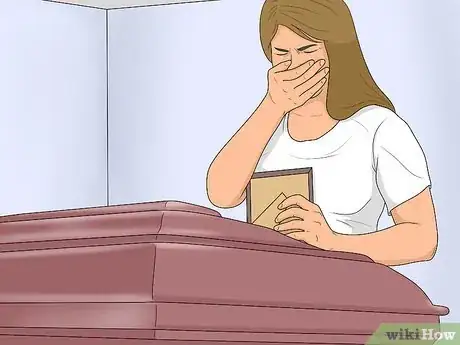


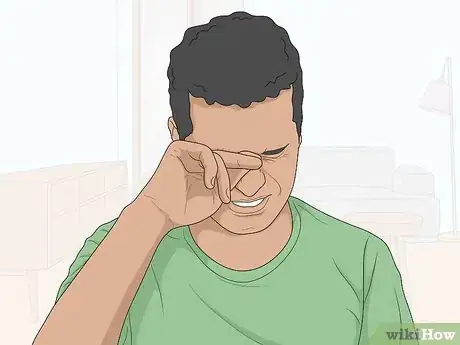
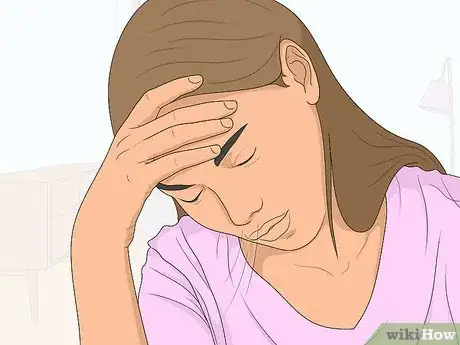
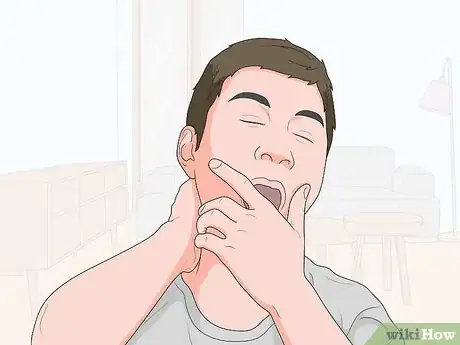



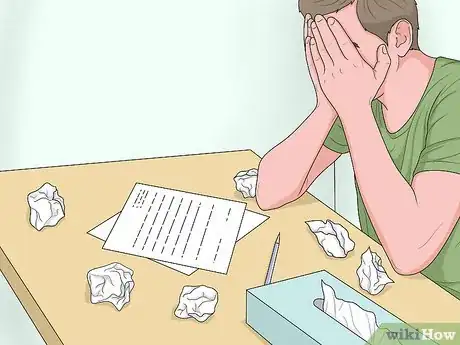

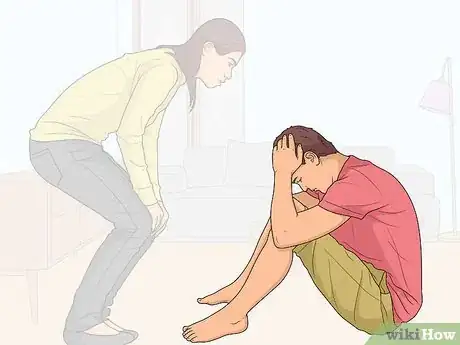
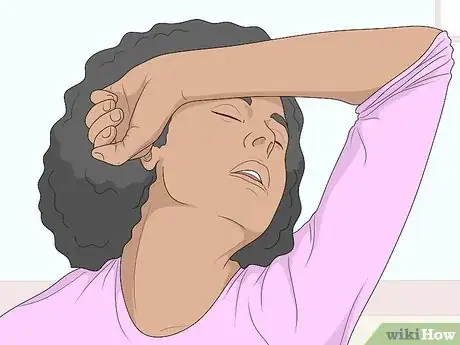


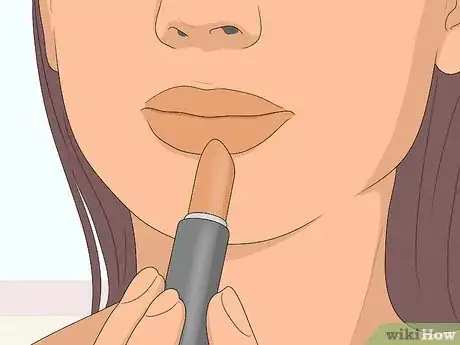


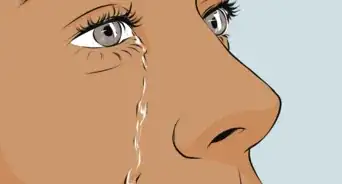


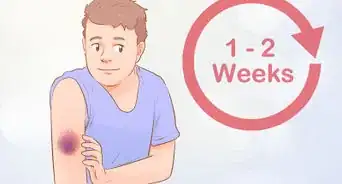

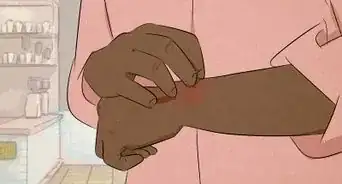
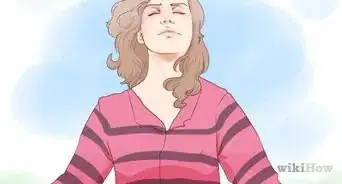















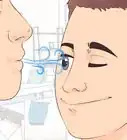



































Medical Disclaimer
The content of this article is not intended to be a substitute for professional medical advice, examination, diagnosis, or treatment. You should always contact your doctor or other qualified healthcare professional before starting, changing, or stopping any kind of health treatment.
Read More...